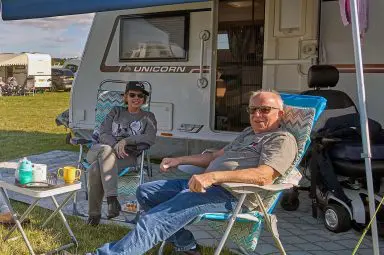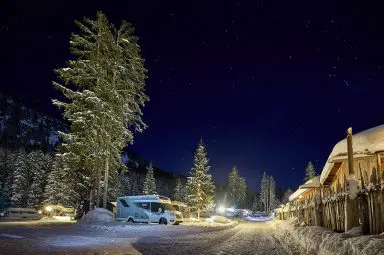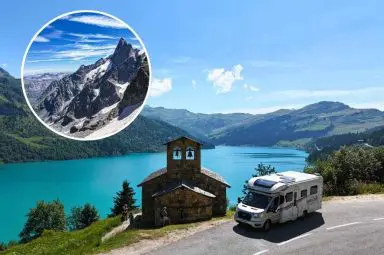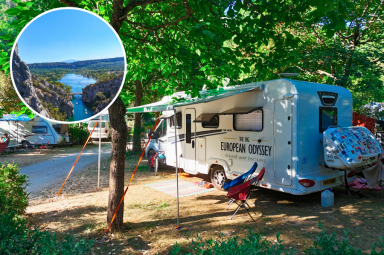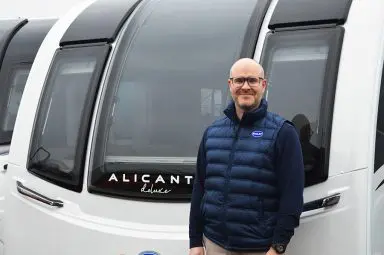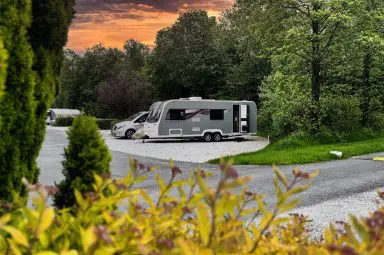Which way to Spain?
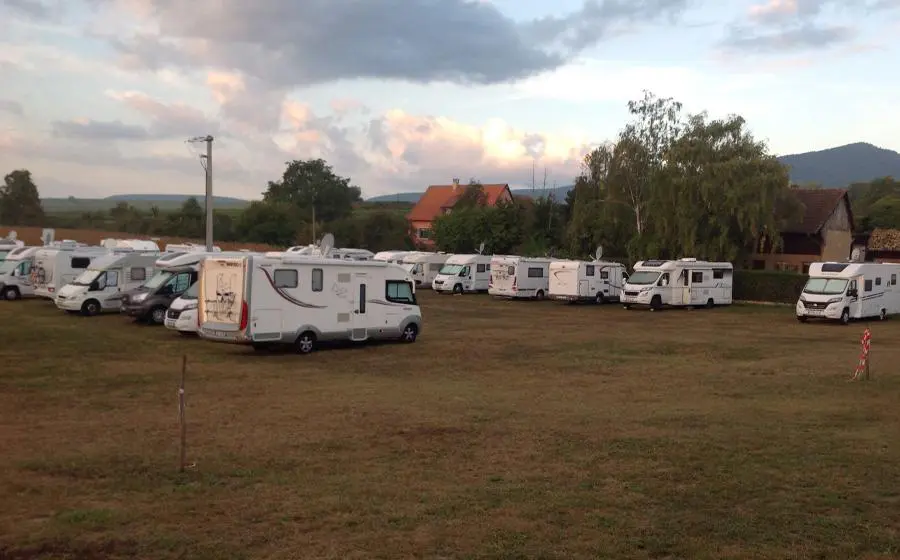
The dilemma we faced is which way to travel, as we have a choice, via Austria, Switzerland or France. We opted to go via France and decided on a toll-free route. The Bailey Autograph 79-4’s built in Sat Nav is adjusted to non-toll roads and as a result, we were able to take a scenic route, which also saved us some euros!
The scenery was captivating as we descended to the foothills of the Alps and passed the Roman town of Kempten – the earliest recording of the town originally called Kambodnon is from 50 BC. Due to its Roman and Celtic history, a prominence of Christianity is in the town with impressive churches to visit.
A 90-minute journey later, we arrived at Lindau – a beautiful island on the eastern side of Lake Constance. Protected by the sculpture of the Bavarian lion and an impressive lighthouse, this popular tourist attraction has lots to see including gardens, museums and boat trips.
The coat of arms of Lindau is a Linden tree (Lindau means tree in German) and visiting the Villa Lindenhof, you will see an oasis of calm where locals and visitors enjoy the pool, lake and splendid views towards the Rhine Valley and Austrian mountains.
In the 79-4, we then followed the shoreline of the famous lake that is 63Km long and borders Germany, Austria and Switzerland. Even though you are in a popular tourist area, the surrounding countryside offers vineyards that are dense with grapes and the farm stalls that adorn the road overflow with apples and pears freshly picked just yards away. Be sure to stop at the many lakeside towns and villages and go for a dip in the sparkling clear waters of the lake. If you’re a sailor or windsurfer then there is no better place!
With the glorious weather and ever-changing scenery, the motorhome made light work of the topography as we headed for the Black Forest and the town of Freiburg. This buzzing town developed quickly because it is strategically located at the junction of trade routes between the Mediterranean Sea, the North Sea regions and the Rhine and Danube rivers. Its main trade is now tourism – primarily due to its easy access to the Black Forest.
Claiming itself as a ‘Green City’, whereby the town is striving for sustainability, Freiburg offers something for everyone: picturesque narrow streets for shopping, classic buildings hosting museums/art galleries and of course, something for families – whether that be the zoo, planetarium or the children’s theatre.
As the afternoon passed, we decided on crossing into France and parking for the night. Using our Aires book, we found ourselves at a flourishing vineyard. At a ‘bargain price’ of free (including electric), we have become accustomed to the etiquette of buying from the vendor as a ‘thank you’. For us, this works well as the vendors usually have produce that is exceptional in value and quality and often locally sourced.
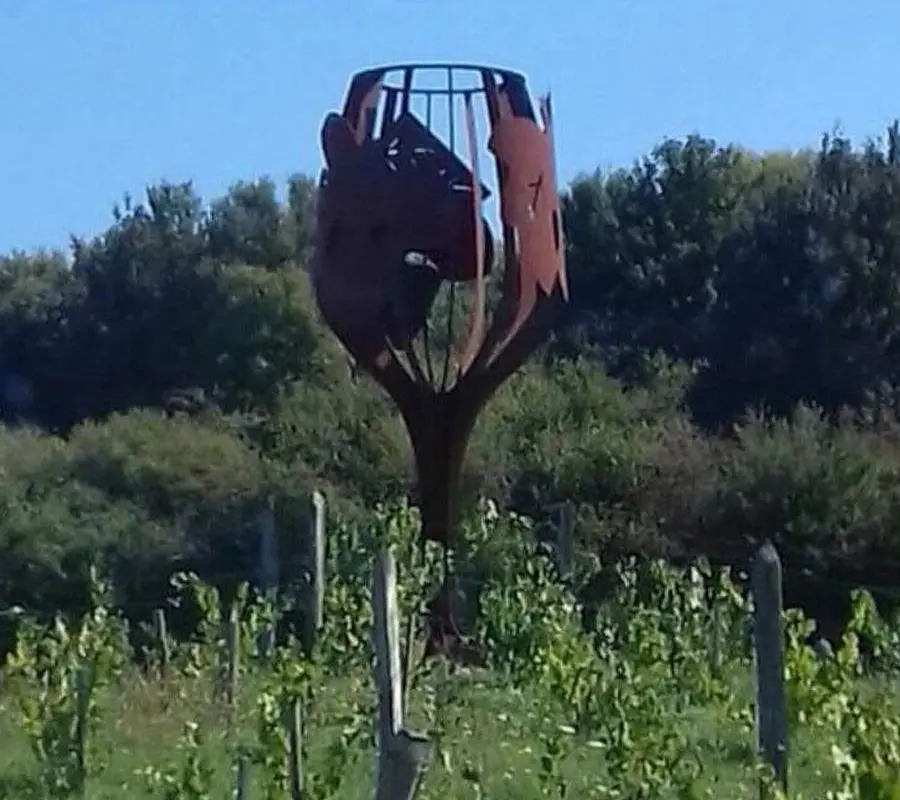
Moving on, we decided to visit the village of Eguisheim (20 Km from Colmar). Eguisheim is a quiet village whose streets are arranged in neat centric circles all around its remarkable castle. The paved streets often host festivals including the Stork festival in August, so it’s no surprise that in 2013 it was voted the ‘favourite village of the French’.
Unfortunately, we were unable to find a pitch close to the centre, due to the village hosting a marathon. However, a kind French customer at the vineyard, told us of another place in the village to stay so we eagerly jumped in the Bailey to set our sat nav.
Just 5 minutes later, we spotted the cardboard motorhome signs and as we entered the busy field, our years of rallying with the Bailey Owners Club indeed confirmed our thoughts… this was a French rally (see opening photo)! Around 40 vans welcomed us to stay the evening as guests and, in the interests of Anglo-French relations, we graciously accepted.
The next day (Saturday), we headed for a two-night stopover at the tiny commune of Arinthod. The village is settled in the Haut-Jura mountain region and is a French natural park area. Adjacent to a local football club, we spent a pleasant afternoon on the Aire watching the next generation of footballers – who knows, we may have seen the next Thierry Henry!
After the weekend, we headed for the picturesque town of Annecy and its impressive lake. Just 35Km from Geneva and in the Auvergine-Rhine-Alpert region (South Eastern France), its nickname is the ‘Pearl of the French Alps’ so this was a very busy place and parking was difficult.
If visiting, I’d recommend arriving early to ensure a placement. Annecy is a beautiful town where you can find yourself getting lost amongst the streets. Also known as the ‘Venice of the Alps’, Annecy has winding cobblestone streets and pastel houses, which follow the charming canals.
We enjoyed a coffee by the lake and continued through Chambery towards Grenoble. Taking the Alpine Road, we climbed the Belledonne mountain range (1,650m) to the ski resort of Chamrousse – the venue for the 1968 Winter Olympics. The 160 HDI Peugeot engine negotiated the winding road and several very sharp hairpin bends with ease and when we arrived at the ski centre Aire, the mountain views for our night stop took our breath away!
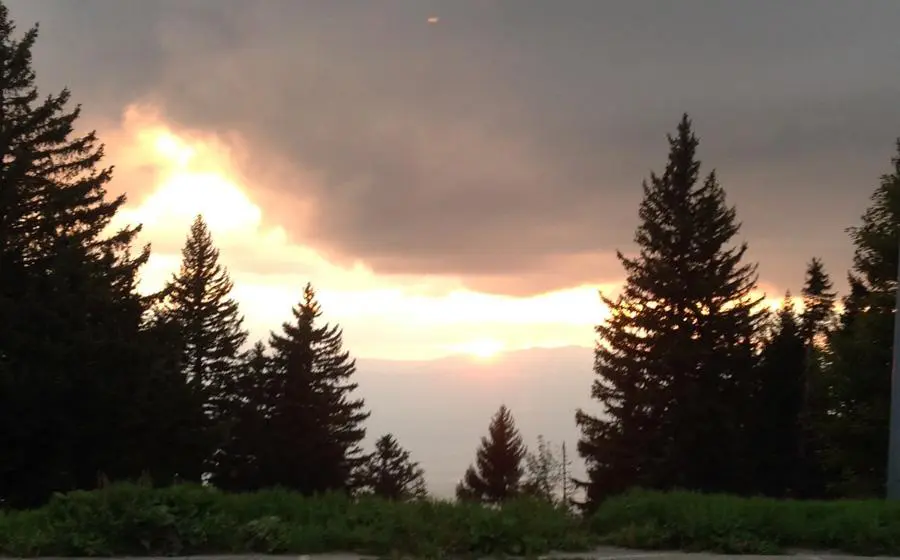
The ‘said breath’ was pure and the cleanest air you will breathe! The only other people on this deserted ski village was a fellow motorhome couple from Germany. They graciously insisted on us sharing their electric hook up (only one worked) and we showed our appreciation with the customary sharing of a bottle of wine whilst looking out at the ski village – which resembled a ghost town from a western movie!
After an uninterrupted night’s sleep, we woke to beautiful sunshine and prepared the van for an adventurous descent. The 79-4 performed impeccably and, at one particular stage, I engaged the HDC option that coped with the challenge superbly.
Once we got to sea level, we headed for Château-Arnoux-Saint-Auban. This is on the Route Napoleon – the route taken by Napoleon in 1815 on his return from Elba. This town has a free Aire and you park next to a French pacifist monument to the dead, which reads, “War is a Crime.”
A short walk from the Aire, there is an impressive Château. Built between 1510 and 1530, this Château now houses the town hall, but visitors are encouraged to take a stroll around the park of the Château and visit the ancient farm (Ferme de Font-Robert) dating back to the 16th century.

Our final leg of France was via Marseille and the Cote Vermeille to Perpignan – entering Spain at the old border town of Ceret. Often, this town is forgotten about as people head to their onwards journeys but, if you’re interested in art, the town hosts the ‘Museum of Modern Art’ where you can see works by Picasso and Dali!
So… onto our next country ¡Vamos a España! Following the Mediterranean coast, we are looking forward to picture postcard views of sun-drenched beaches, fishing harbours, and secluded coves. Having visited Spain many times, we are excited to see friends, family and of course have some authentic Catalan food in the Costa Brava! Cheers!
Next
News & Events
